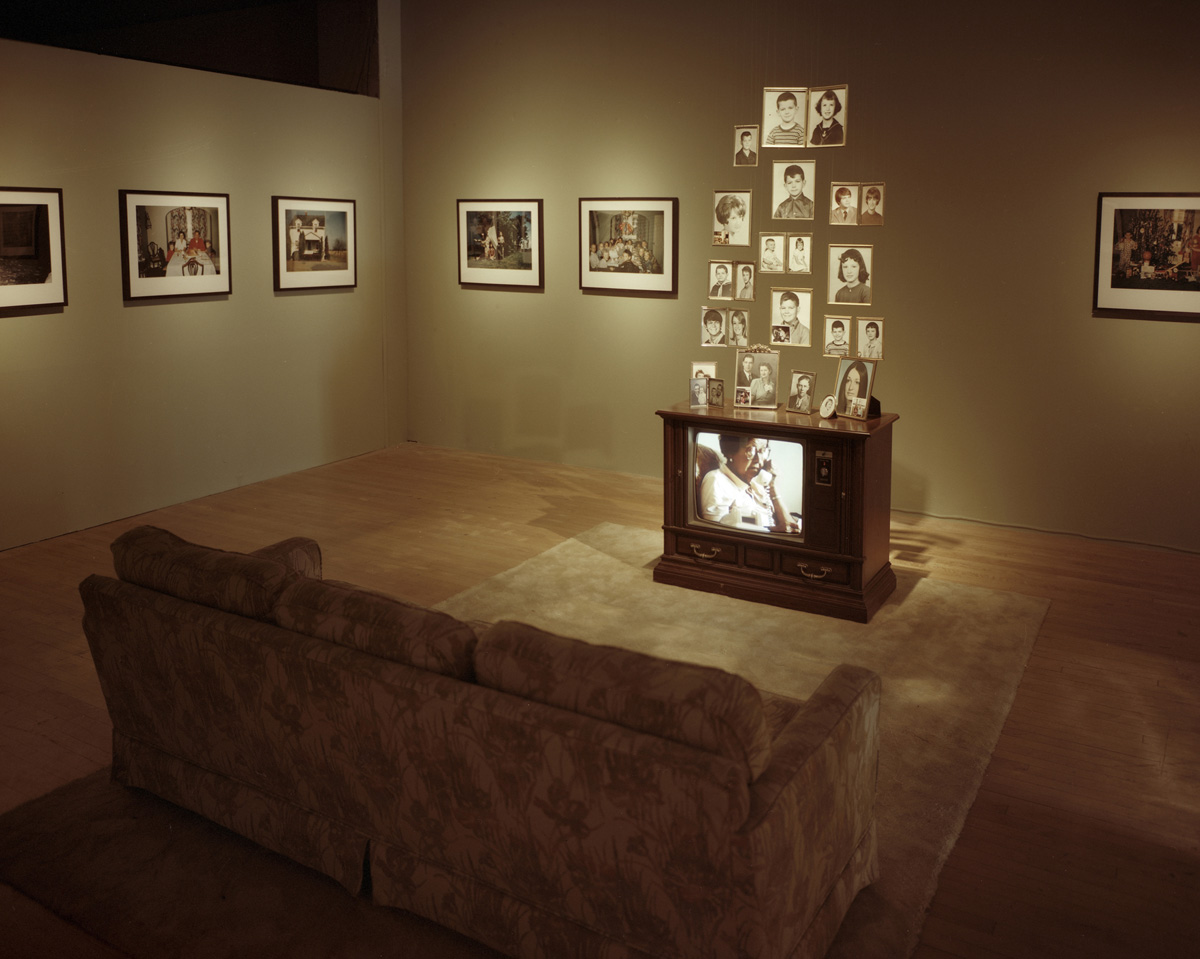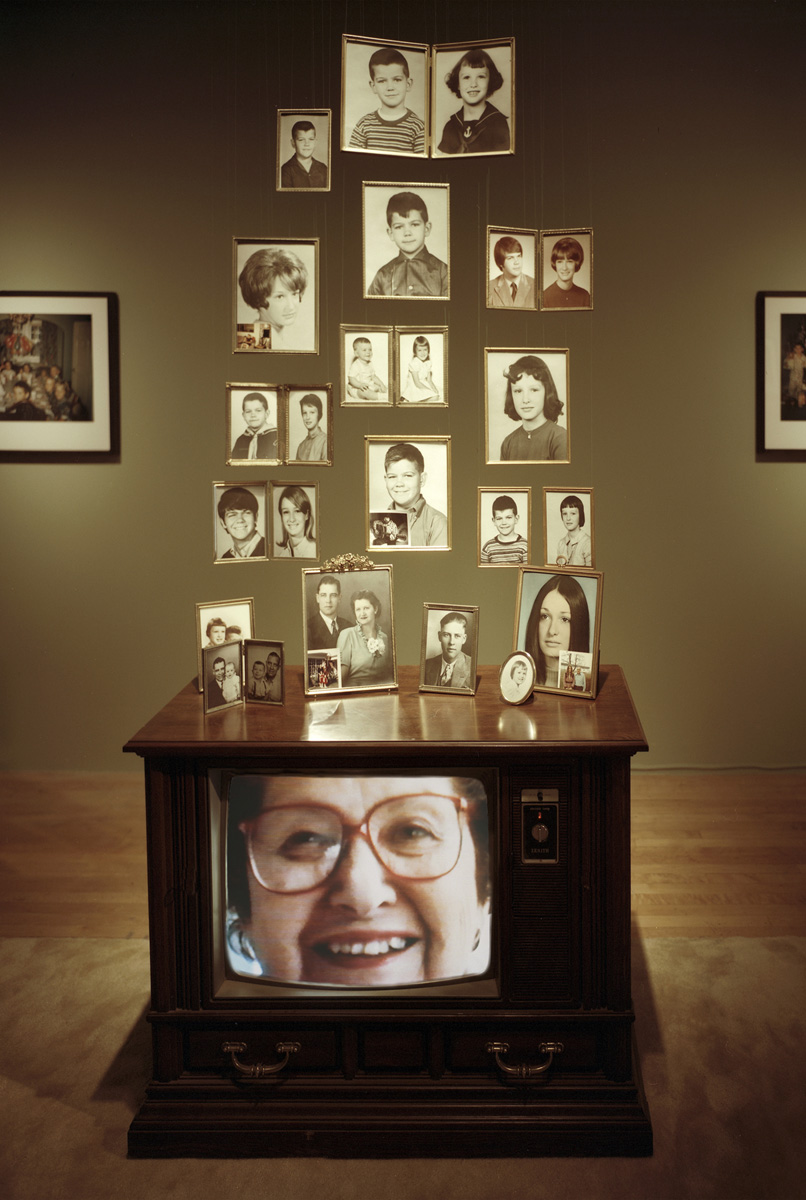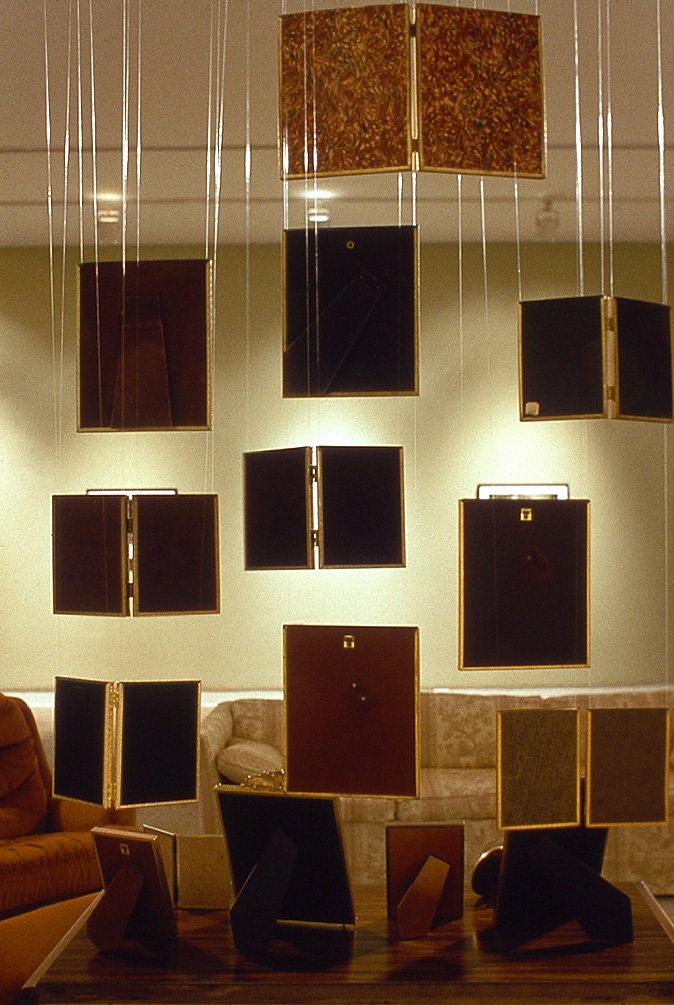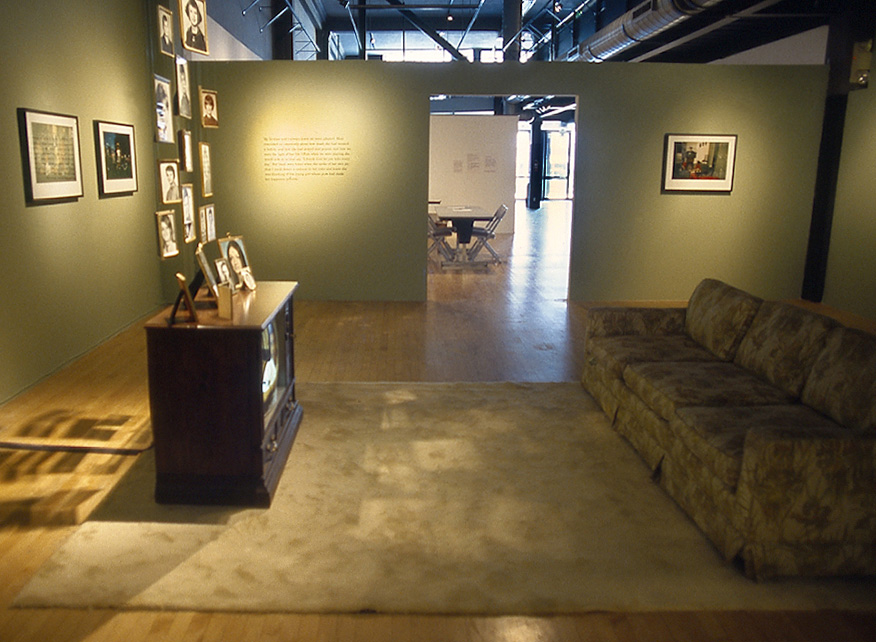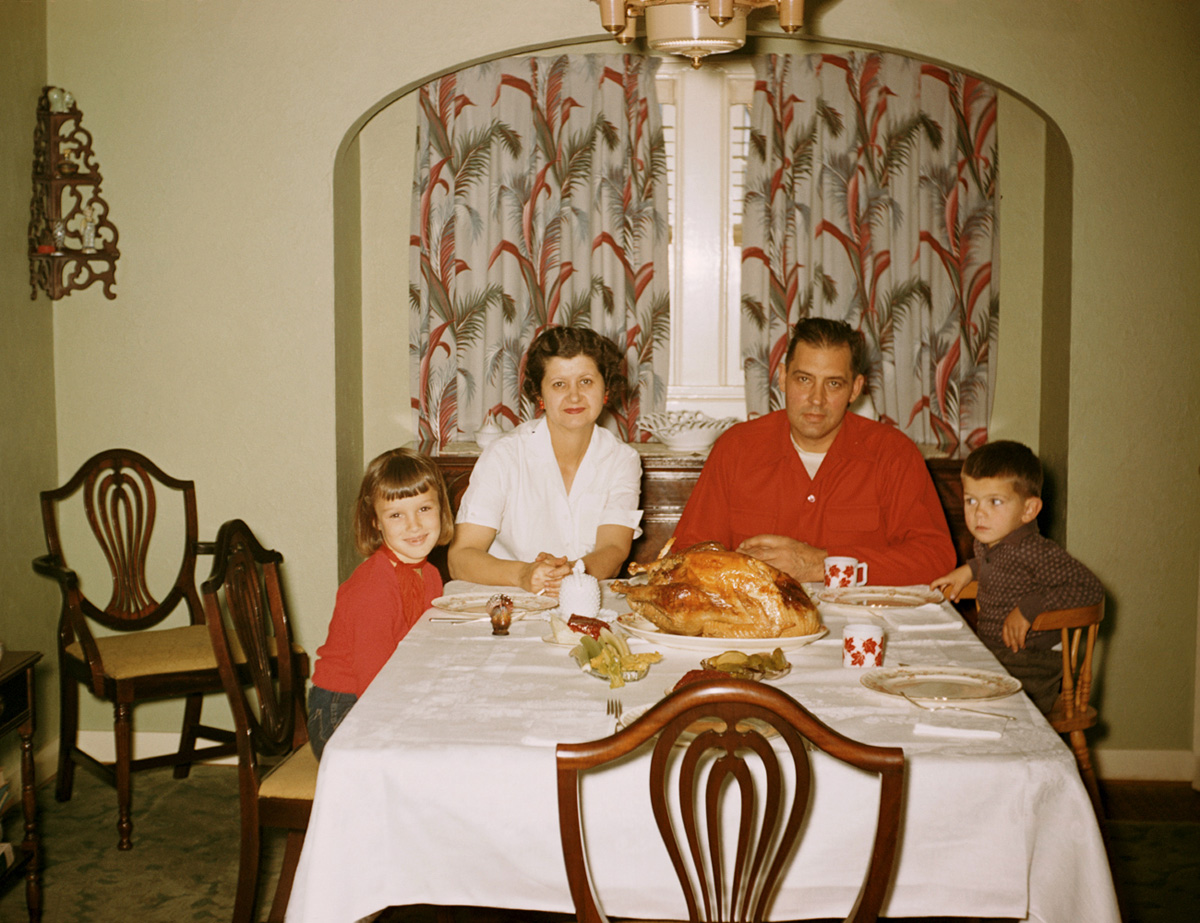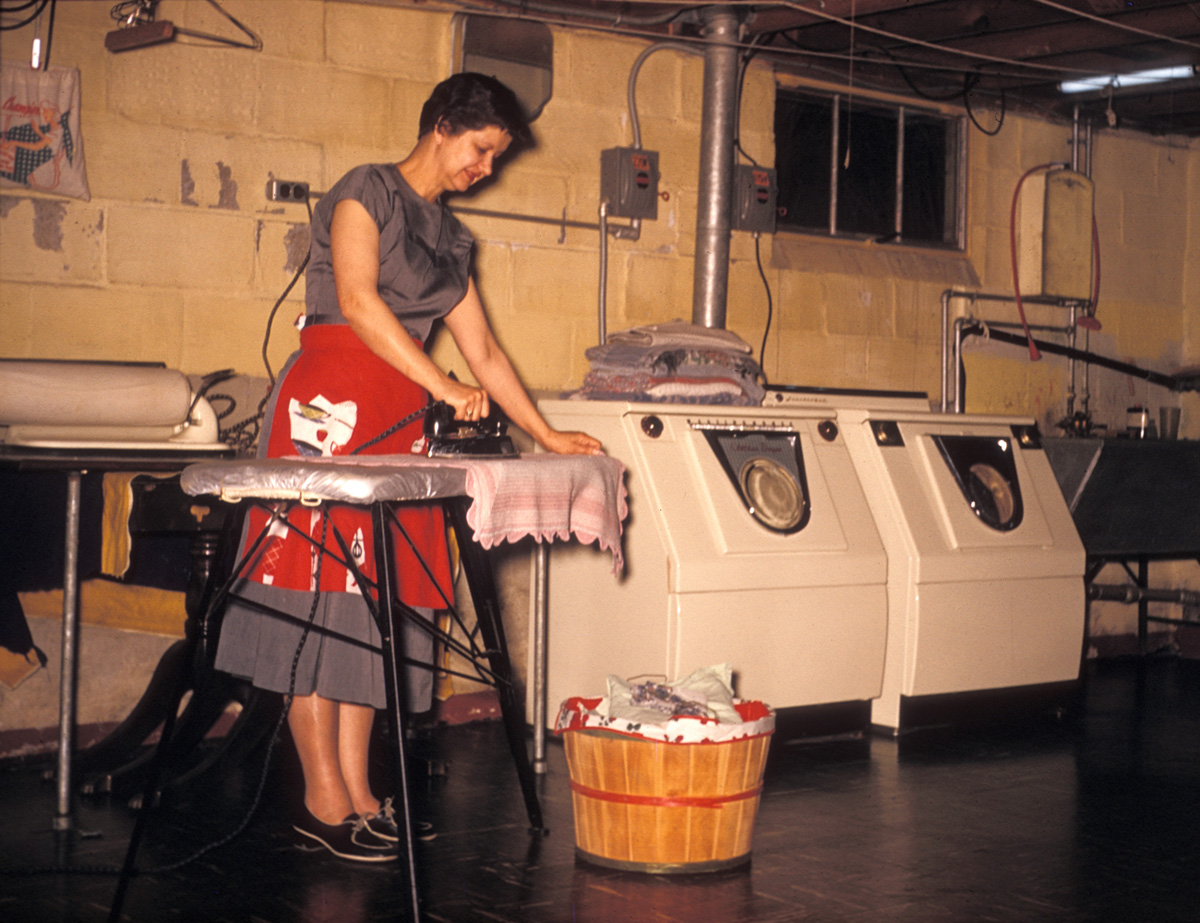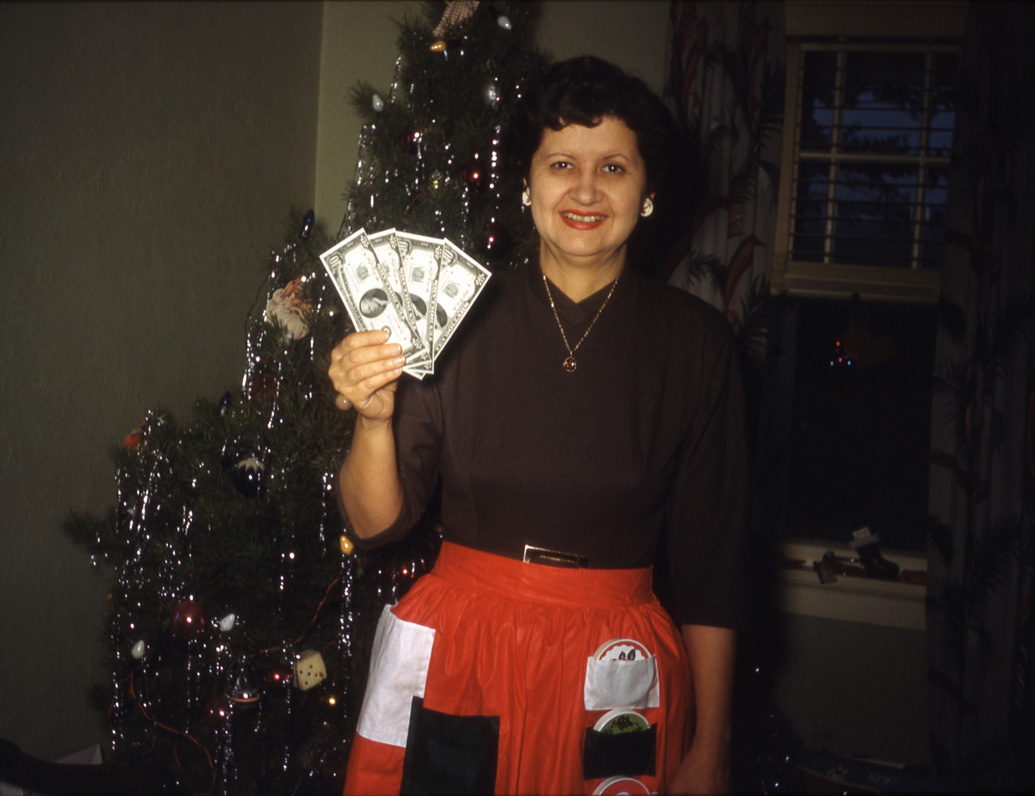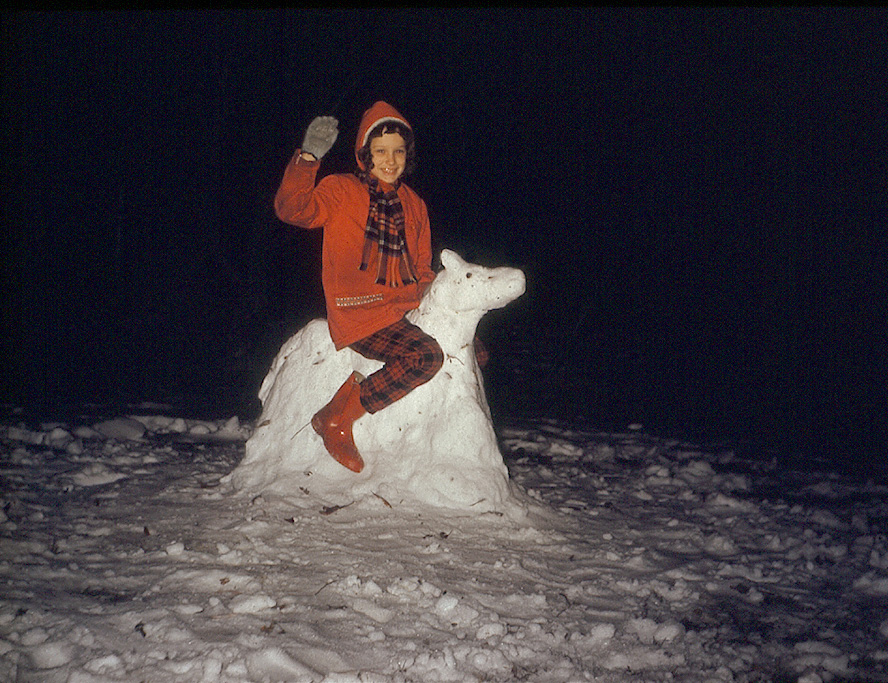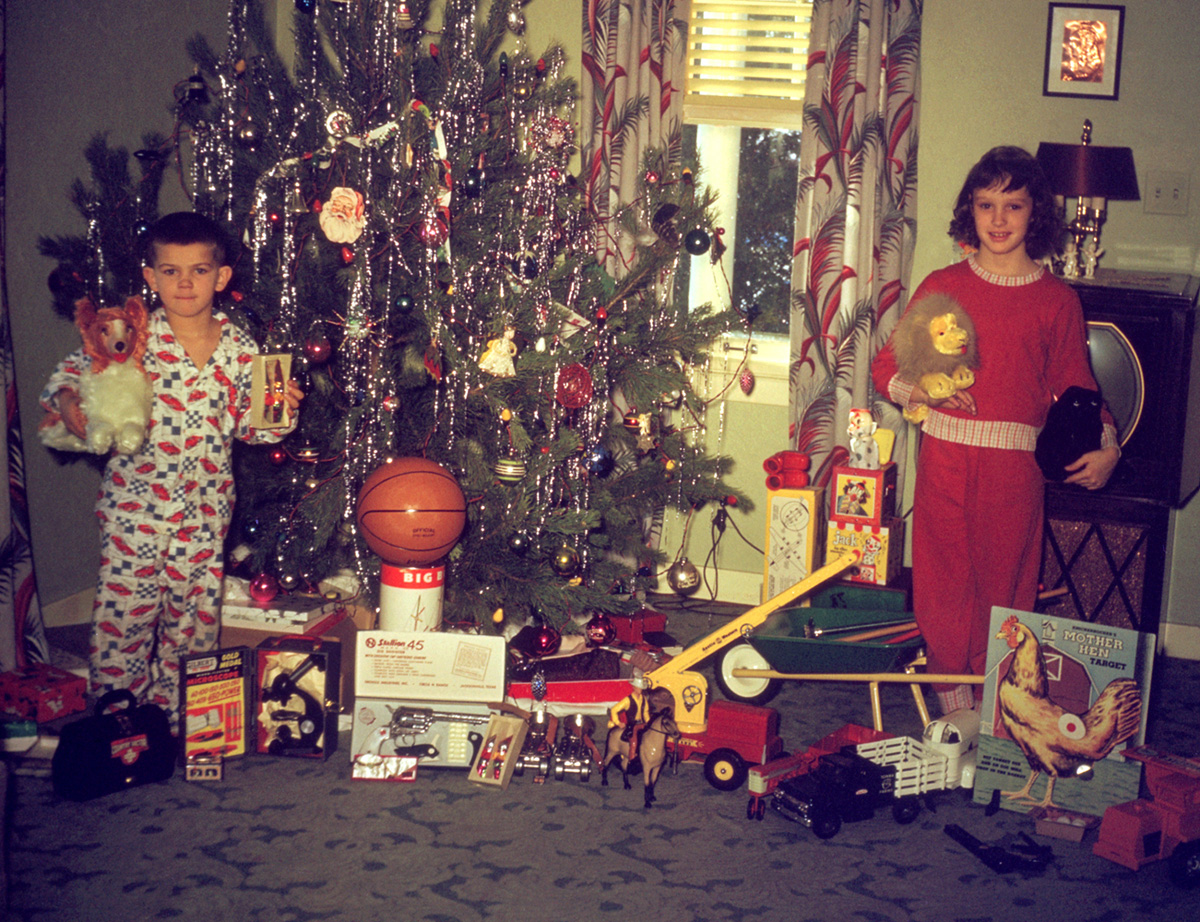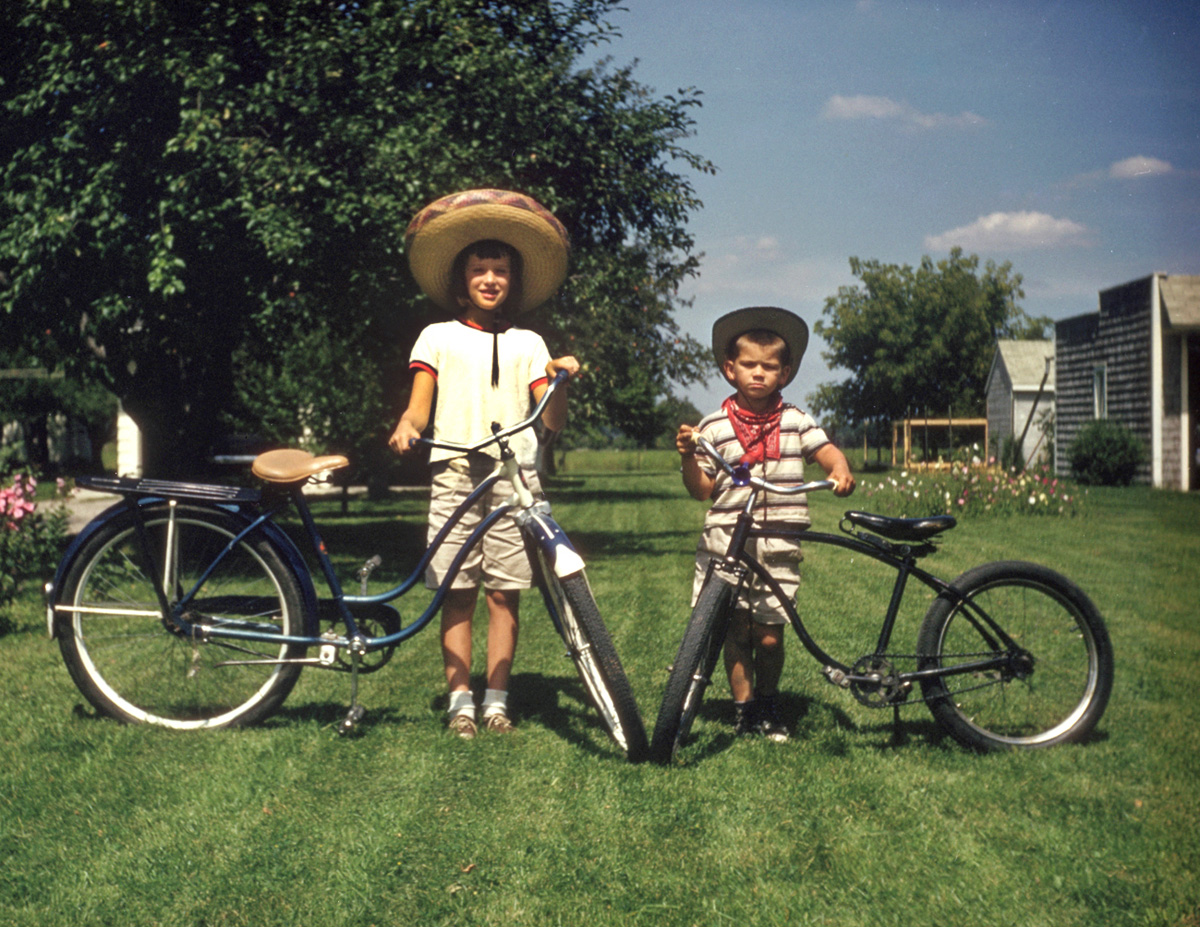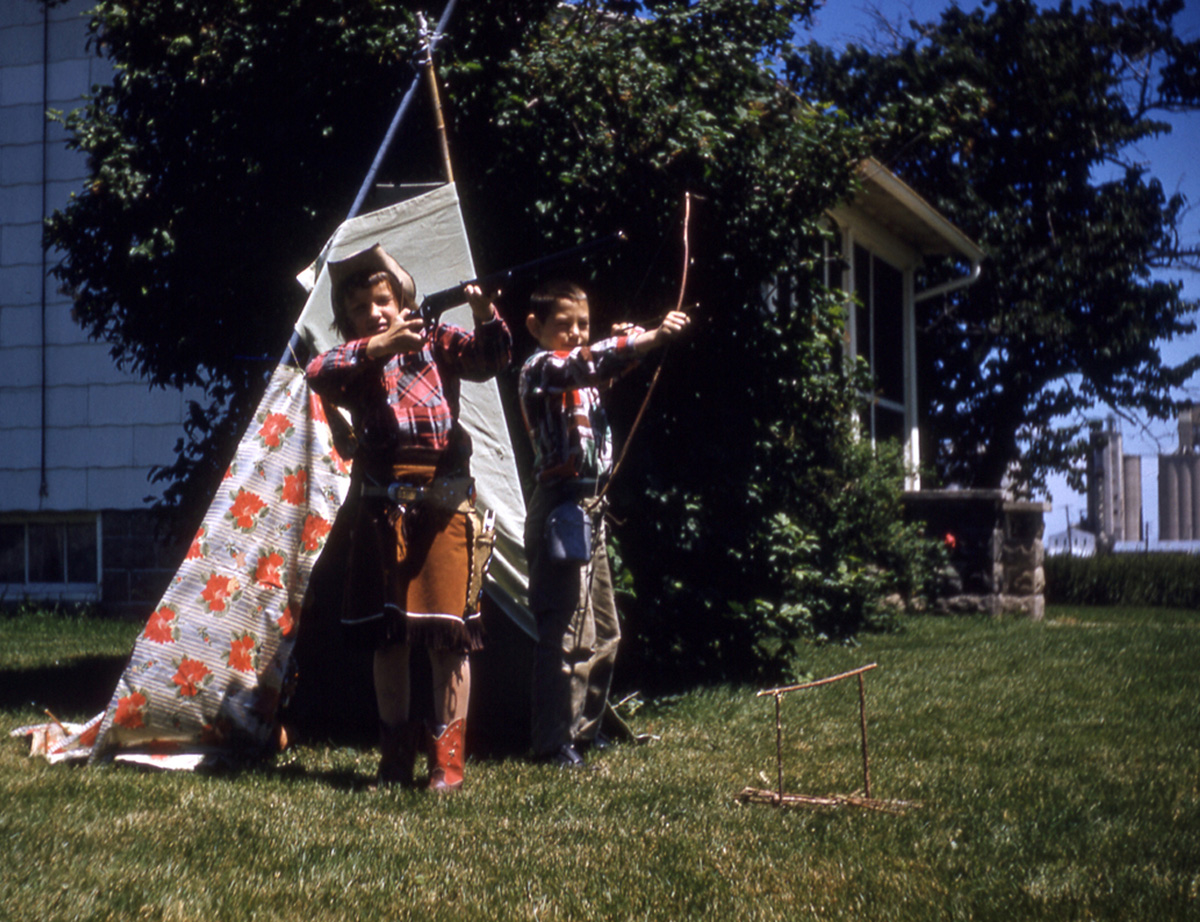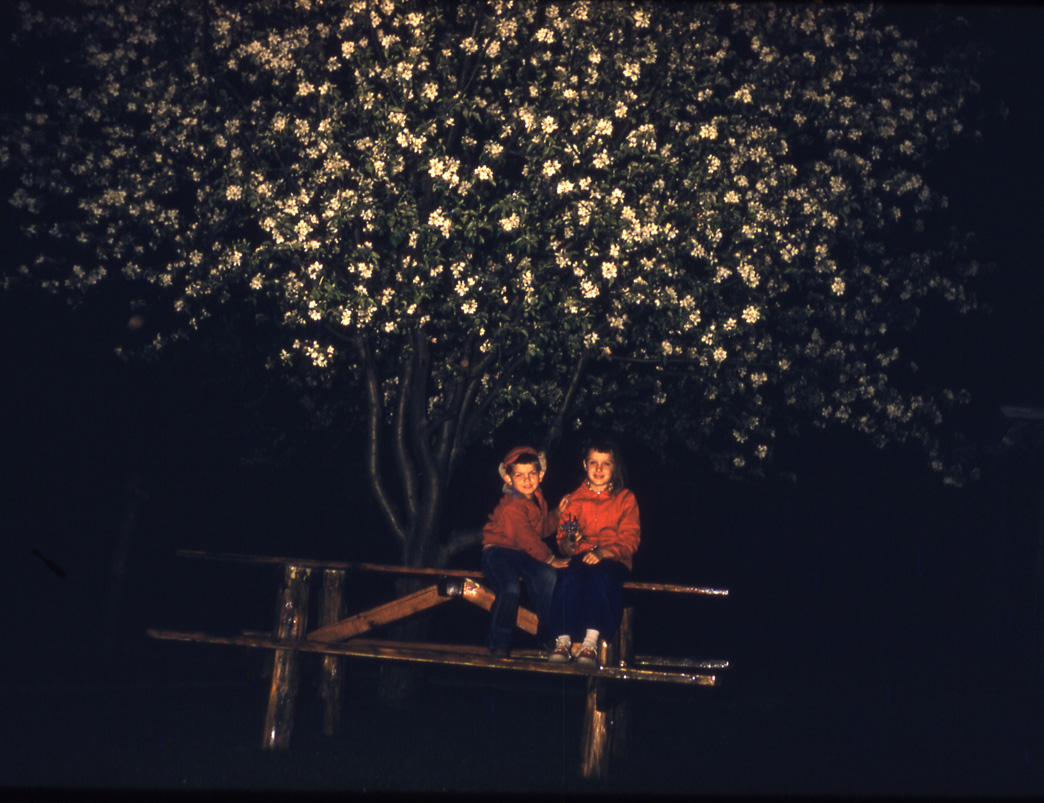Description
The audience of Fessler’s Cliff & Hazel installation finds itself in a living room with a couch, rug, and an old console television where a filmic portrait of Fessler’s adoptive parents Cliff and Hazel is underway. Class pictures and studio portraits of Ann and her brother, John, cover the top and hang above the television, just as they do in Hazel’s living room, which can be seen in the video. The viewers are invited to make themselves comfortable and watch the film, which was shot by Fessler on her first trip home since the death of her father. Her voice-over narrative describes growing up with Cliff and Hazel, but her camera is trained on Hazel who is now struggling to live without her husband of fifty years.
As viewers leave the present-day area defined by the rug, they enter the past. The gallery walls are painted the same shade of green as the walls of the Fessler home in the 1950s, which are visible in Cliff’s pictures on the walls of the gallery. His images chronicle holiday meals, Ann and John with their bikes, Christmas morning, and the old back-yard apple tree in full bloom. They also include the photographs he took of Hazel, his wife, who in one photograph is showing off the cash he had given her for Christmas, and in another is ironing in the basement next to the new washer and dryer he had purchased for her.
Moving through the installation, the audience discovers that unlike Hazel’s actual living room, the pictures above the television are suspended in space, allowing for room to walk behind them. The gap not only makes the space between past and present more apparent, but reveals the empty backs of the pictures. There is nothing behind the pictures of Ann and John, a reminder of the gaps in Ann and John’s personal histories as adoptees.
Each portrait included in the installation tells part of the story of this family. The school pictures made by a commercial photographer are the most public. These clean, idealized pictures of childhood were mailed to aunts and uncles, traded with school friends, and prominently displayed in the home. The family snapshots by Cliff offer a more intimate view of the family. Originally they were not shared publicly, but projected on a small screen in the living room for Hazel, Ann, and John. They were a way of measuring changes from year to year and of holding on to memories, in this case of the things Cliff wanted to remember. Fessler’s filmic portrait and voice-over narration, not only reveal what cannot be known from the other two modes of picturing, but remind viewers of what is not, or cannot be, pictured in family photographs.
Information
Cliff & Hazel, installation by Ann Fessler, 1997
Medium: Cliff & Hazel video, 1995, 1999; framed cibachrome photographs from Kodachrome slides by Clifford Fessler, 1950s; vinyl text applied to walls; furniture
The Cliff & Hazel Installation premiered as part of a collaborative exhibition with Carol Flax, entitled Ex/Changing Families: Two Stories of Adoption, at the California Museum of Photography, Riverside, California, 1997. It traveled to the McKinney Avenue Contemporary, Dallas, Texas, in 1998. As part of the exhibition, members of the community were invited to write and post their adoption stories in a room set aside for that purpose. By the end of the exhibition the walls were covered and as the exhibition traveled the stories from one site were taken to the next.
The Cliff & Hazel installation was subsequently exhibited as a solo exhibition. In 2007 it was exhibited at Duke’s Center for Documentary Studies, Durham, North Carolina, along with an Everlasting audio installation, thus pairing Fessler’s portrait of her adoptive family with the stories of the mothers who had lost children to adoption.
The collaborative exhibition Ex/Changing Families: Two Stories of Adoption, and the Cliff & Hazel film, were made possible, in part, by a residency at Banff Centre for the Arts in 1996. In 1999, Fessler was awarded a post-production residency at the Wexner Center for the Arts, Columbus, Ohio. It was subsequently screened at festivals where it received awards in the Short Documentary category.


